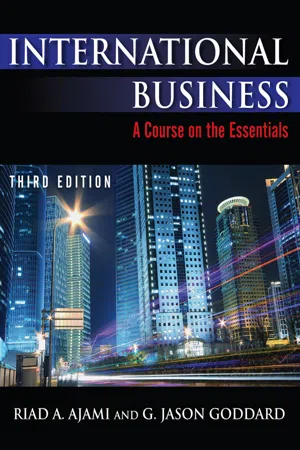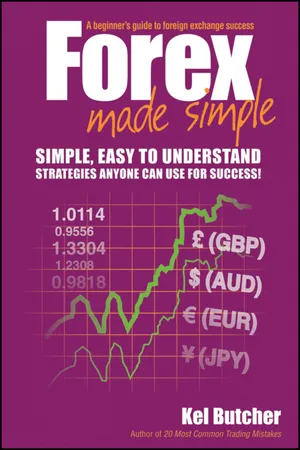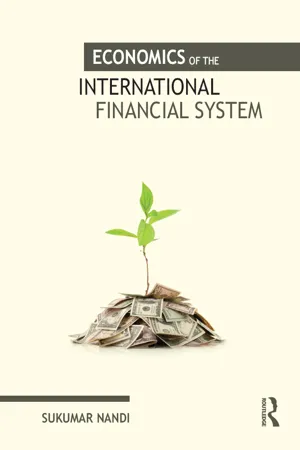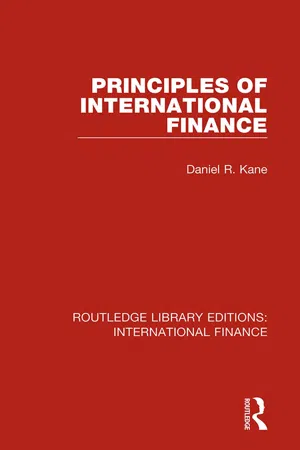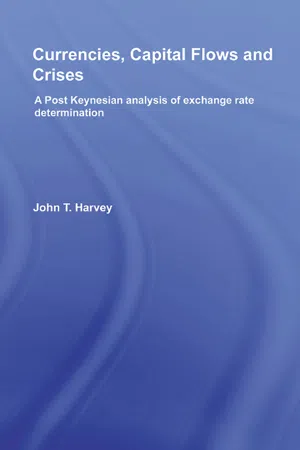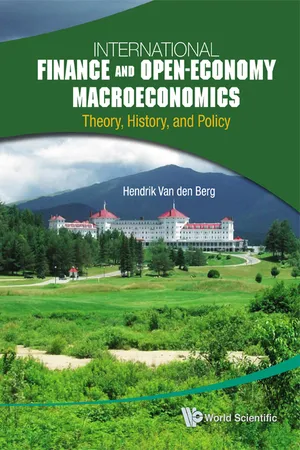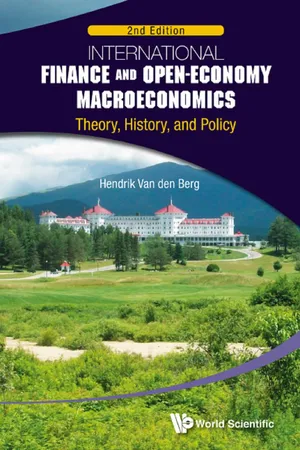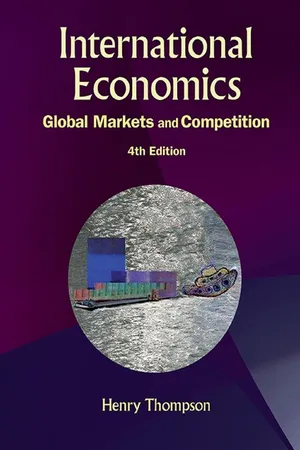Economics
Participants in Foreign Exchange market
Participants in the foreign exchange market include central banks, commercial banks, hedge funds, multinational corporations, and individual traders. These participants engage in the buying and selling of currencies, aiming to profit from fluctuations in exchange rates. The market operates 24 hours a day, five days a week, and is the largest financial market in the world.
Written by Perlego with AI-assistance
Related key terms
Related key terms
1 of 4
Related key terms
1 of 3
10 Key excerpts on "Participants in Foreign Exchange market"
- eBook - ePub
International Business
Theory and Practice
- Riad Ajami, Jason G Goddard(Authors)
- 2014(Publication Date)
- Routledge(Publisher)
Institutions are very important participants in the foreign exchange markets because of their large and varied currency requirements. Multinational corporations typically are major participants in the foreign markets, continually transferring large sums of currencies across national borders, a process that usually requires the exchange of one currency for another. Multinational corporations utilize foreign exchange markets to hedge transactions conducted in more than one currency whereby the initial exchange rate at the time a transaction is agreed will remain constant once the deal is settled at a future date. Corporations that utilize foreign exchange as a hedging tool have decided that they are not in the currency speculation business and are seeking to minimize the effects of currency movements on their business transactions, operating performance, and financial statements. Financial institutions that have international investments are also important foreign exchange market participants. These institutions include pension funds, insurance companies, mutual funds, and investment banks. They need to switch their multicurrency investments quite often, generating substantial transaction volumes in the foreign exchange markets.Apart from meeting their basic transaction needs, both the individual and institutional participants use the foreign exchange markets to reduce the risks they incur because of adverse fluctuations in exchange rates.BANKSBanks are the largest and most active participants in the foreign exchange markets. Banks operate in the foreign exchange markets through their traders. (British banks and many others use the term “exchange dealer” rather than “exchange trader.” These terms can be used interchangeably.) Exchange traders at banks buy and sell currencies, acting on the requests of their customers and on behalf of the bank itself.Customer-requested transactions form a very small proportion of trading operations by banks in the foreign exchange markets. To a very large extent, banks treat foreign exchange market operations as an independent profit center. In fact, some major banks make substantial profits on the strength of their market expertise, information, trading skills, and ability to hold on to risky investments that would not be feasible for smaller participants. On occasion, banks can also incur substantial losses. As a result, foreign exchange operations are closely monitored by bank management teams.CENTRAL BANKS AND OTHER OFFICIAL PARTICIPANTSCentral banks enter the foreign exchange markets for a variety of reasons. They can buy substantial amounts of foreign currencies to either build up their foreign exchange reserves or bring down the value of their own currency, which in their opinion may be overvalued by the markets. They can enter the markets to sell large amounts of foreign currencies to support their own currencies. In the latter part of the 1980s, central banks and treasurers of the United States, Japan, and West Germany intervened quite often to correct the imbalances between the values of the yen and deutsche mark (then the currency of West Germany; the unified Germany now uses the euro) versus the US dollar. - eBook - ePub
Forex Made Simple
A Beginner's Guide to Foreign Exchange Success
- Kel Butcher(Author)
- 2011(Publication Date)
- Wiley(Publisher)
Chapter 3: The foreign exchange markets and major participantsWe need to understand who the major players in these markets are and the types of forex markets available. Forex market participantsNow that we have an insight into the major currencies and their economies, and the important role that central banks play within an economy and the foreign exchange, or forex, markets, we now need to deepen our understanding of the forex market before we begin forex trading.Tip The foreign exchange, or forex, market is divided into levels of access that are determined by the size of the line, or amount of money, being traded in each transaction. The inter-bank marketAs well as the central banks and their role in and influence on the global foreign exchange market, many other participants are involved in the trading of foreign exchange. It is important to know who these other players are, where they fit in the market and the roles they play within the foreign exchange market.After the central banks, the large global commercial banks and financial institutions are the major participants in the forex market, and together they form the inter-bank market. While central bank operations in the market may be sporadic, the large commercial banks are actively involved in foreign exchange trading every day. Their trading activities add massive liquidity and volume to the market daily and are the main cause of price movement in the markets. Major international banks deal either directly with each other or through two main electronic platforms, EBS and Reuters, which offer trading in the major currency pairs. The banks regularly undertake trades worth billions of dollars on behalf of clients or, more commonly, speculateing on their own accounts. They are responsible for the majority of forex trading volume.The inter-bank market is an unregulated and decentralised wholesale market that works around the world and around the clock. These banks effectively act as market makers in the spot forex market (discussed later in this chapter), as they are constantly quoting buy and sell prices in anticipation of movements in currency prices. - eBook - ePub
FX Trading
A Guide to Trading Foreign Exchange
- Alex Douglas, Larry Lovrencic, Peter Pontikis(Authors)
- 2011(Publication Date)
- Wiley(Publisher)
Chapter 5: Who’s who at the FX marketplaceOkay, by now you’re probably thinking that you understand the basic language, have a fair idea of the concept of free-floating currencies and you’re ready to take the plunge. But before this can happen, you need some idea of the playing field and just who the main players are.Why does foreign exchange trading exist?At the root of it all, international trade is the most obvious reason for the existence of the foreign exchange market. Importers buying goods in a foreign country need to sell their local currency and buy foreign currency to pay for the goods they have bought in the currency of the country in which they have bought them. On the other side of the trade equation, exporters will often receive payment for the goods they sell overseas in the currency of the country to which their goods have been sent. In the majority of cases, these exporters will then need to convert the foreign currency they have earned back to their local currency.As mentioned in chapter 2, the exchange of currencies from different countries and regions for the purpose of international trade can be traced back thousands of years to merchants travelling the Silk Road through Asia and trading in the bazaars of Mesopotamia. These days, with the advent of globalisation and the ever-growing cross-border trade in goods and services, international mergers and acquisitions, and 24-hour financial markets, FX transactions are even more prevalent.Three broad groups of participantsBefore looking too closely at exactly who is doing all the trading in the foreign exchange markets, it is helpful to have a broad view of the three major groups of participants. In very general terms, these are the inter-bank (or wholesale) entities, the clients of the wholesale entities (both retail and corporate), and the intermediaries that help bring these parties together and facilitate trade (the brokers). Although each participant in the foreign exchange market will fit within one of these groups, it is worth bearing in mind that there is also frequent interaction between these groups. - eBook - ePub
- Sukumar Nandi(Author)
- 2017(Publication Date)
- Routledge India(Publisher)
two-ness in the transactions in the foreign exchange. Any transaction is between two currencies. Each person involved in the transaction is simultaneously a buyer and a seller of currencies. The bank in the above example is buying Indian rupee and selling USDs. The student is also doing just the opposite, selling Indian rupee and buying USDs. Each transaction again involves two banks as the Indian bank is using its dollar balances when it issues the draft to the student. Lastly, the Indian bank by selling USDs is making itself short of it, and it has to purchase equal amount of dollars to square its position. This aspect is unique in foreign exchange transaction, and it makes it a very complicated process.9.1 The PlayersBy nature, the foreign exchange market (FEM) is a global market. The principal players are governments, central banks, commercial banks, other financial institutions, brokers, businesses, corporates, and individuals. The major transactions are between the commercial banks, which are authorized dealers.The central bank is an important player as it has the primary responsibility of maintaining the stability of exchange rate of the domestic currency. The stock of the latter is issued by the central bank and it is in circulation in the domestic economy. Part of this may be floating in the international market. It is the responsibility of the central bank to preserve the intrinsic value of its liability. This gives credibility to the domestic currency in the international market. It is no accident that people are reluctant to hold Australian dollar or Indonesian rupiah.Commercial banks are the providers of liquidity to the economic system, and this they do by facilitating the cash flow of currencies of multiple denominations. They hold foreign currency for this, and the portfolio of commercial bank has the important element in the form of foreign currency either as cash or as short-term monetary instruments. Trading in foreign exchange is an important source of revenue to the banks.Corporate houses enter FEM to convert their asset or liability in foreign currency into the domestic currency. The latter being the currency of the balance sheet, the corporates insulate the balance sheet position from the fluctuation of the exchange rate. Firms doing international business should pay the suppliers in the local currency in each country in which they operate. They also receive payments in different currencies from their customers. These foreign currency cash flows are converted into domestic currency. - eBook - ePub
- Daniel R. Kane(Author)
- 2018(Publication Date)
- Routledge(Publisher)
Part OneThe Foreign Exchange Market and the Balance of Payments
The foreign exchange market (Chapter 1 ) is the market in which foreign currencies are bought and sold. As such, it is an integral component of international finance.Currencies are transacted to finance international trade and to facilitate international capital flows, but their conversion involves uncertainty. This creates risk which can either be eliminated (to minimise losses) or exploited (to maximise profits). The extent to which this risk is averted or accepted determines the use to which different types of foreign exchange rates and trading techniques are put. These are examined in Chapter 2 .Both trade and capital flows are recorded in the balance of payments, which is a systematic record of a country’s international transactions. The balance of payments, which is the subject of Chapter 3 , indicates whether a country is in external equilibrium or disequilibrium and the extent to which corrective policies, if any, should be implemented.Passage contains an image
1The Foreign Exchange MarketThe foreign exchange market is:A market for the purchase and sale of foreign currencies (foreign exchange).It has no single physical location, but exists where and when there is a need to transact foreign currencies. Markets are principally found in leading financial centres such as London and New York and consist of market-makers, who are prepared to deal in foreign currencies. These market-makers comprise banks and brokers who are prepared to buy and sell foreign currencies from other banks, brokers, corporations, the general public and even governments.The price at which currencies are transacted is the foreign exchange rate, which is:The price of one currency expressed in terms of another.It indicates the number of units of foreign currency which buyers and sellers are prepared to exchange for units of domestic or other foreign currency. More specifically, the exchange rate can be expressed as the number of units of domestic currency which buyers and sellers are prepared to exchange for one unit of foreign currency. For example, if one pound sterling trades for two US dollars, the exchange rate from a UK perspective would be 50 pence per dollar (£0.50/$) and from a US perspective, two dollars per pound ($2/£). - eBook - ePub
Currencies, Capital Flows and Crises
A Post Keynesian Analysis of Exchange Rate Determination
- John T. Harvey(Author)
- 2009(Publication Date)
- Routledge(Publisher)
3 Psychology and decision-making in the foreign exchange market 1Here begins the process of building the Post Keynesian alternative, something that will continue through Chapter Five . By then, a formal model will have been developed whose features include equilibrium trade imbalances, less-than-full employment, endogenous money, exchange rates marked by volatility and bandwagon effects, and an explanation of market participants’ forecasts wherein expectations are guided by a mental model that is shaped by social forces. The goal of this chapter is to examine the institutional structure of global currency markets and the social and psychological factors affecting market participants’ forecasting and decision making. Among the phenomena explained will be volatility, bandwagon effects, and forecast-construction bias. Reference will be made to Institutionalism, Keynes’ General Theory , and the psychological research of Kahneman and Tversky.2THE INSTITUTION OF FOREIGN CURRENCY TRADING
The first step in understanding the currency markets must be a review of their organization. Agents participating in the market for foreign exchange enter at one of three levels: wholesale (or market making), retail, or commercial. These are illustrated in Figure 3.1. Those acting in the top box are willing to make two-way offers on a continuous basis, such that they stand ready to buy and sell the currencies in which they offer wholesaling services. Agents operating at the wholesale or retail level may contact a wholesaler and request prices for a currency. Both a buy and sell rate will be quoted by the wholesaler before the caller reveals their intention. The caller then decides whether or not they will carry out their transaction at the price offered. The goal of the wholesaler is to “generate revenues from the spread - eBook - ePub
International Finance and Open-Economy Macroeconomics
Theory, History, and Policy
- Hendrik Van den Berg(Author)
- 2010(Publication Date)
- WSPC(Publisher)
microstructure, we mean all the details, including the technology, management, and minute-to-minute trading flows, of the over-the-counter foreign exchange markets around the world. Traditional exchange rate models link foreign exchange rates to macroeconomic variables such as price levels, interest rates, trade flows, and asset demand. But if most of the daily trades on the foreign exchange market are driven by something other than international trade and investment, those models are not accurate. The evidence shows that those models have not explained or predicted exchange rates accurately. This chapter describes the microstructure of the foreign exchange markets. Perhaps a better understanding of exactly how these markets function will enable financial economists to improve their models.Chapter Goals- Provide more details on the foreign exchange markets.
- Present the Bank for International Settlements (BIS) 2007 survey results, which show that the US dollar dominates foreign exchange transactions, London increased its geographic leadership, and trading volume grew to $3.2 trillion daily volume in 2007.
- Discuss the shift to electronic communications and how technological change is affecting the foreign exchange market.
- Explain how the $3 trillion-plus daily trading volume is largely the result of arbitrage and inventory adjustment trades, not fundamental demand and speculation.
- Present and explain the evidence of fraud in the foreign exchange market.
- Discuss the importance of fundamentals versus technical analysis in the foreign exchange market, and what this means for customers.
6.1 Overview of Today's Foreign Exchange MarketOver-the-counter dealers buy and sell foreign exchange to customers on demand. These dealers will accept temporary exposure to the risk of changing exchange rates by holding foreign exchange, unlike independent brokers, who match buyers and sellers but do not themselves ever hold foreign exchange. Not all of the dealers are what we call market makers - eBook - ePub
International Finance and Open-Economy Macroeconomics
Theory, History, and Policy
- Hendrik Van den Berg(Author)
- 2016(Publication Date)
- WSPC(Publisher)
Part II
The Foreign Exchange Market
Passage contains an image
Chapter 3
The Foreign Exchange Market
The puzzling thing is that despite the obvious gain from the use of one money, it appears to be quite difficult to introduce one money in the international economy which will be acceptable to everyone.(Paul De Grauwe, 1989, p. 1)If you have traveled overseas, you are already familiar with exchange rates, the prices at which one country’s money is exchanged for another country’s money. In your travels, you were probably intrigued by the different currencies in countries you traveled to, viewing it as part of the “international experience”. Importers, exporters, and international investors generally do not view the coexistence of many different currencies throughout the world as a positive experience, however. They are more likely to see the many different moneys as a complication that adds to the cost of international transactions. There is some evidence that suggests that there would be more international trade and international investment if importers, exporters, and investors did not face the cost of having to exchange currencies every time they exchanged products or assets across borders.Foreign exchange markets are one of the distinguishing characteristics of the global economy. It is difficult to avoid the foreign exchange markets when conducting international business. One way would be to avoid dealing with foreigners, but in today’s global environment that would severely limit business opportunities. Another way to eliminate the need for dealing with foreign exchange markets would be for governments to abandon their national moneys for a single world currency. Despite some recent efforts to move in that direction, as in the case of the European countries who, after 2012 jointly adopted the euro as their shared money, most governments are not yet willing to surrender their national currencies and adopt an international currency. The global economy will in all likelihood have multiple currencies for the foreseeable future, and cross-border transactions will continue to require the exchange of currencies. - eBook - ePub
International Economics
Global Markets and Competition
- Henry Thompson(Author)
- 2017(Publication Date)
- WSPC(Publisher)
Peter Kenen (Princeton) argues that governments should intervene to stop runs on FX markets. Ronald McKinnon (Stanford) argues for active management of FX rates. John Williamson (Institute for International Economics) favors active intervention and recommends joint action by central banks. Jacob Frankel (IMF) thinks better fiscal and monetary policy should be the focus. Martin Feldstein (Harvard) believes market forces should be allowed to determine FX rates.Section B Problems
B1. Suppose China wants to undervalue the yuan. Diagram the FX market for yuan and illustrate the artifically low exchange rate. How could the central bank sustain this rate? Why would it want to?B2. How could the Chinese government use FX market controls to keep the yuan below its market value?B3. Justify your opinion on fixed versus floating exchange rates.C. FOREIGN EXCHANGE TRADING
The FX market involves buying and selling foreign currency. Topics in foreign exchange trading include: •Expectations and exchange rates •Stability of exchange rates •Triangular arbitrage across currenciesExpectations and FX Rates
Traders expecting a currency to appreciate will increase demand in the FX market. The increased demand appreciates the currency. Market expectations make themselves come true.Much of the hourly and daily changes in FX rates is due to traders looking for short term gains. Long term investors want to hold assets in currencies expected to maintain or appreciate. There is motivation for investors with cash in high inflation countries to buy assests in low inflation countries.Expectations influence the spot exchange market. Expectations explain the dollar depreciation that started in 1985 when the central banks of Germany, France, Britain, Japan, and the US announced they would act together to sell dollars. Traders and investors expected the dollar to depreciate. The volume of central bank sales was trivial but trader expectations moved the market. In 1989 the dollar appreciated in spite of dollar sales by central banks. Central banks control their money supplies, determining inflation and exchange rates. - eBook - ePub
Getting Started in Currency Trading
Winning in Today's Market
- Michael D. Archer(Author)
- 2012(Publication Date)
- Wiley(Publisher)
Part 1 The Foreign Exchange MarketsPassage contains an image Chapter 1 The World of FOREX Introduction—What Is FOREX?
YOU ARE HERE—Before you can test the waters with a demo account, learning basic information about the FOREX markets is essential. Part 1 will accomplish this task with discussions of history, terminology, and regulations.Foreign exchange is the simultaneous buying of one currency and selling of another. Currencies are traded through a broker or dealer and are executed in currency pairs, for example, the European Euro and the U.S. Dollar (EUR/USD) or the British Pound and the Japanese Yen (GBP/JPY). If you buy the GBP/JPY, you are long the GBP and short the JPY; if you sell the GBP/JPY, you are short the GBP and long the JPY. An account is typically funded with the currency of your resident country. A few FOREX brokers offer the option of funding with a non-local currency.It is important to understand a FOREX transaction is effectively a spread between two currencies. You cannot simply buy the USD or sell the JPY—the purchase or sale must be in relationship to another currency. This is one of two important facts to remember as we delve into the world of foreign exchange trading.The FOReign EXchange market (FOREX) is the largest financial market in the world, with a turnover volume of $4 trillion daily. This is more than three times the total amount of the stocks and futures markets combined and almost a doubling in the past five years.Unlike other financial markets, the FOREX spot market has neither a physical location nor a central exchange. It operates through an electronic network of banks, corporations, and individuals trading one currency against another. The lack of a physical exchange enables the FOREX market to operate on a 24-hour basis, spanning all time zones across the major financial centers. This fact—that there is no centralized exchange—is the second important fact permeating all aspects of the FOREX experience.
Index pages curate the most relevant extracts from our library of academic textbooks. They’ve been created using an in-house natural language model (NLM), each adding context and meaning to key research topics.
Explore more topic indexes
Explore more topic indexes
1 of 6
Explore more topic indexes
1 of 4
